From construction to destruction: building lasers and melting walls Understand article
Science in School is published by EIROforum, a collaboration between eight of Europe’s largest inter-governmental scientific research organisations (EIROs). This article reviews some of the latest news from EIROs.
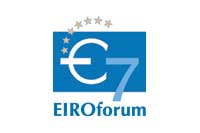
EIROforum
EIROforum combines the resources, facilities and expertise of its member organisations to support European science in reaching its full potential.
CERN
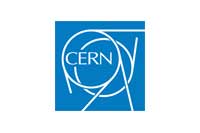
Between January and March 2013, Valentina Rigamonti, a Master’s student at University of Milan in Italy, collaborated with the CERN Communication Group to study the usability of the CERNland Newsroom. CERNland is a CERN website aimed at school children that lets you play with particles and physics. Valentina involved around fifty 4th-grade pupils (aged 10) in the project. The participants played with the
website and tested and ranked various types of news (text, cartoon and animation). They also had to draw a scientist (at the beginning and at the end of the project) and investigated the content of a mysterious box to experience the scientific method.
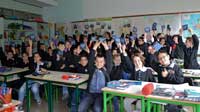
Rigamonti
The activities provided insights into the children’s understanding of what a scientist is and how he/she works. In her thesis, Valentina concluded that using supporting images when teaching science can facilitate children’s understanding of science and can correct their misconceptions.
Thanks to Valentina’s work, the CERNland team was able to improve the site’s navigation, introduce new sections and games, and plan a clear multimedia model for future NewsRoom content.
To explore the new and improved website, which is available in six languages, visit CERNland.
Based in Geneva, Switzerland, CERN is the world’s largest particle physics laboratory.
EFDA-JET: Scientific vandalism helps ITER cut costs
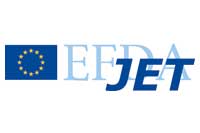
Last August, scientists at the Joint European Torus (JET) deliberately melted some of their wall tiles. The purpose of the destruction was to test materials for the fusion reactor of the future. ITER is a global fusion experiment being built to demonstrate the feasibility of fusion power, and once again JET served as its test bed. This time, JET was used to try out materials for the parts of ITER’s reactor wall that will be exposed to hot fusion plasma.
Originally, ITER was to start with a wall made of carbon, which is the most robust and well known material for this purpose. But when the reactor starts to produce real amounts of fusion power, it will need a wall made of tungsten. Today there is little experience with tungsten walls. They can melt under certain circumstances and scientists worried that the debris might reduce the plasma power. The tests conducted at JET proved that molten tungsten does not affect the plasma and as a result, the ITER Organization will start with tungsten tiles, saving the project about 400 million euros.
To watch a video of the tiles melting and to find out more about the experiments, see the press release.
Situated in Culham, UK, JET is Europe’s fusion device. Scientific exploitation of JET is undertaken through the European Fusion Development Agreement (EFDA).
EMBL: What are you scared of ?
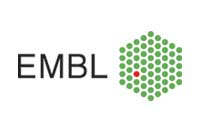
A study led by Cornelius Gross, from the European Molecular Biology Laboratory (EMBL) in Monterotondo, found that different types of fear are processed by different groups of neurons in the brain. Specifically, a brain circuit that is known to be involved in defensive behaviours seems to handle the fear of predators like rats. In contrast, fear of members of the same species uses the brain circuit involved in sex and reproduction; and fear of pain is processed by yet another part of the brain.
The human brain has similar circuits to rats and we also experience different kinds of fear. These findings could help develop more efficient treatments for specific phobias or panic attacks, by targeting the relevant region of the brain.
Thanks to a collaboration with another EMBL research team, led by Detlev Arendt, the scientists are now also looking into how these fears, and the neuronal circuits that process them, may have evolved in time.
More information about this latest discovery from Monterotondo can be found in the press release on the EMBL website.
To read the original publication, see:
Silva, B A, et al. (2013) Independent hypothalamic circuits for social and predator fear. Nature Neuroscience 16: 1731-1733. DOI: 10.1038/nn.3573.
To find out more about the work done by Cornelius Gross’ lab at Monterotondo, you can visit the group’s website. Detlev Arendt’s group also has a website.
For an earlier Science in School article about how our brains respond to fear see:
Stanley S (2011) A neural switch for fear. Science in School 18: 32-35.
European XFEL: Starting to build the laser
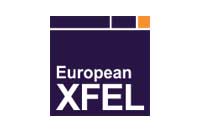
The European X-ray Free Electron Laser (European XFEL), currently under construction in the Hamburg area of Germany, is continuing towards completion. At the heart of the facility is a 3.4 km long X-ray free-electron laser that will enable scientists to study matter and chemical reactions in unprecedented nanoscale detail. The last several months saw the European XFEL begin the transition from construction of the facility to installation of the first parts of the X-ray laser.
The full subterranean structure includes a 5.8 km of tunnels, which fit within a span from Hamburg to the project’s future headquarters in Schenefeld, Schleswig-Holstein, and a 4500 m2 experiment hall where the project’s six planned scientific instruments will be housed. The instruments will be where scientists from around the world will conduct their experiments.
Five months after the end of underground construction, the project recently installed the first part of the laser’s accelerator, the electron gun. The gun contains the source of the free electrons, a piece of caesium telluride (Cs2Te). When excited by a laser beam, the compound will release electrons, which will then be “kicked” into the accelerator by a radiofrequency pulse within the gun. From there the electrons will be accelerated to nearly the speed of light, beginning the first step toward generating European XFEL’s X-ray flashes.
European XFEL is a research facility currently under construction in the Hamburg area in Germany. It will generate extremely intense X-ray flashes for use by researchers from all over the world.
ILL: CSI Neutrons
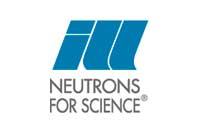
When your finger touches a surface, it leaves behind deposits of sweat and oil that mirror the ridges and troughs on your fingertips. The classical approach to see these is to ‘dust for prints’ but there needs to be a lot of fingerprint material and only 10% of fingerprints taken from crime scenes are usable in court.
Instead of sticking something to the fingerprint, researchers from the University of Leicester have developed a new technique that uses the fingerprint as an insulating mask, so that the reagent – an electrochromic polymer that changes colour when a charge is applied- is only deposited on the bare metal surface. The polymer creates a negative image of the print and is highly sensitive so much less fingerprint residue is required.
After deposition, the team also chemically modified the film to make it fluoresce. The ILL was key to watching the modification of the polymer to check it worked because neutrons can easily distinguish the polymer and fluorescent molecules.
To learn how to turn your students into forensic scientists see:
Gardner G. (2006) The detective mystery: an interdisciplinary foray into basic forensic science. Science in School 3:35-38.
If you’d like to learn more about luminescence visit:
Welsh E. (2011) What is chemoluminescence? Science in School 19:62-68.
ILL is an international research centre at the leading edge of neutron science and technology, based in Grenoble, France.
ESRF: Immersed in world-class scientific research
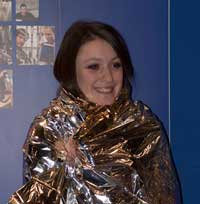
Want to make a career in science? Students can now come to the ESRF and discover their (maybe hidden) skills for becoming a researcher.
ESRF has developed a programme, called “synchrotron@school”, for secondary school students of the “Académie de Grenoble”. A physics teacher worked in residence at the ESRF during six months to help set-up hands-on experiments to illustrate the interactions between light and matter. Different types of light, lasers, ultraviolet and infrared – and of course X-rays – will reveal some of their secrets to curious students.
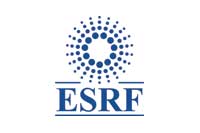
Students can visit the institute, carry out an experiment, test different conditions, discuss the findings, make a poster and present it in front of the class. All this can be done in one day, in an extraordinarily stimulating research environment.
The first three sessions of “synchrotron@school” took place in the brand new ESRF Visitor Centre in February 2014 and more will be organised in April. The programme is already a success and the organisers hope that it will be possible to extend it to more schools in the future.
Situated in Grenoble France, ESRF operates the most powerful synchrotron radiation source in Europe.

